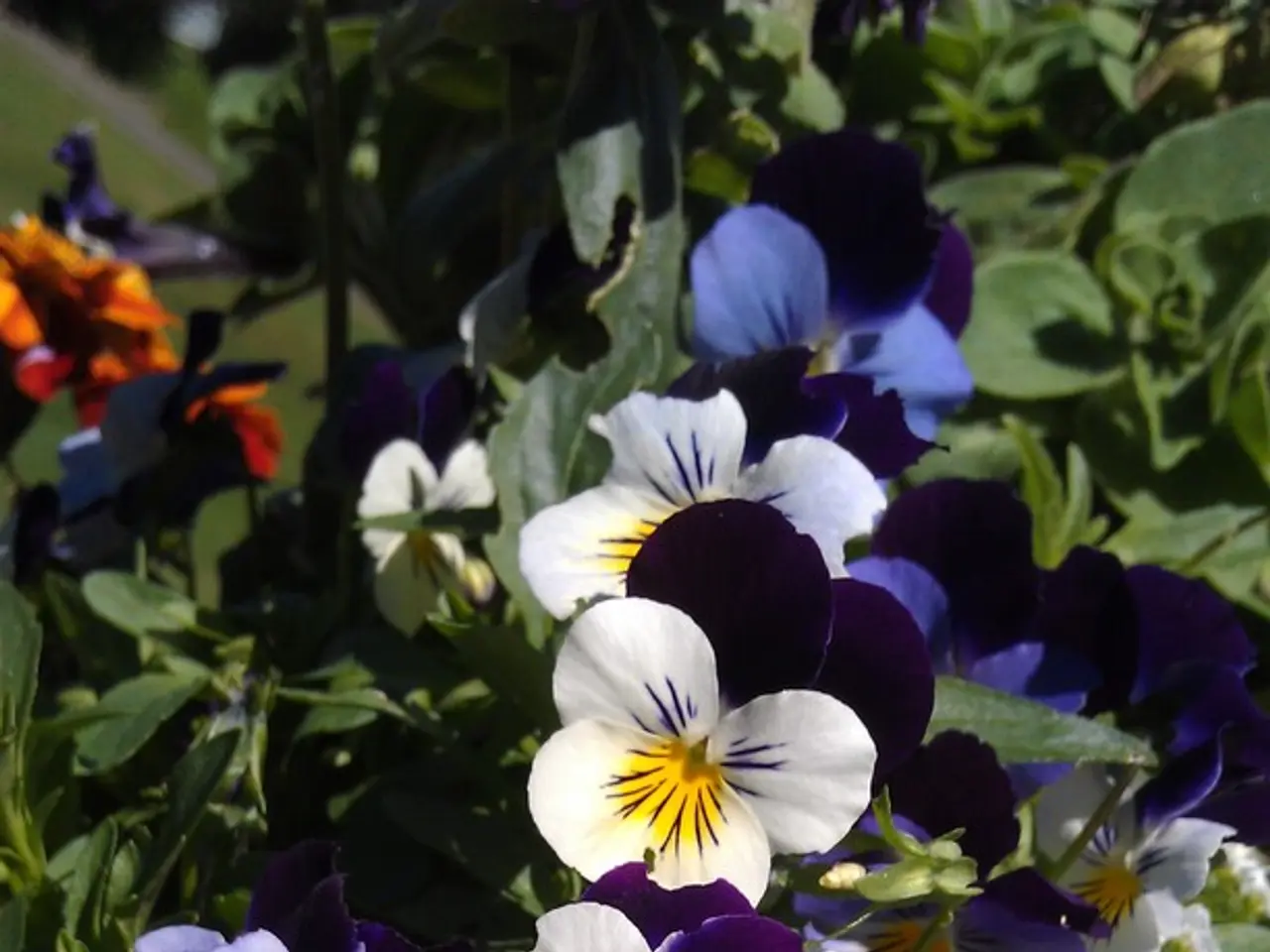Guide on Cultivating Nasturtiums: Tips for Sowing, Nurturing, and Gathering Nasturtium Seeds and Plants
Growing and Enjoying Vibrant Nasturtiums in Window Boxes and Hanging Baskets
Nasturtiums, with their vibrant flowers and edible leaves, make a delightful addition to any garden, especially when grown in window boxes or hanging baskets. These resilient plants thrive in the right conditions and can provide a splash of colour to your home's exterior.
Choosing the Right Variety
When growing nasturtiums in containers, opt for trailing or climbing varieties. Their long vines cascade or climb nicely, creating a beautiful display. Examples of such varieties include Variegatus, Spitfire, Climbing Phoenix, Jewel of Africa Mix, Flower Carpet Dayglow Mix, and Little Gem Mix. The latter is a more compact option, suitable for smaller spaces [1][3].
Preparing the Container
To grow nasturtiums in window boxes or hanging baskets, use a well-drained potting mix and ensure the container has good drainage. For climbing varieties, provide some support, such as a trellis, within the basket. Position the container in full sun for best flowering [1].
Sowing Seeds
Plant seeds directly into the container after the last frost (soil temperature around 55–65°F or 12–18°C). Nasturtiums are fragile and often don't transplant well, so it's best to sow them directly into the container. If starting indoors, sow seeds 2–4 weeks before the last frost, but be cautious when moving seedlings outdoors [1].
Caring for Your Nasturtiums
Maintain consistent moisture without sogginess. Ensure the pot or basket has good drainage to prevent waterlogging. Dead-heading and pruning are beneficial to the plants, as this provides room for new flowers and foliage [1].
Harvesting and Enjoying Nasturtiums
For stuffing leaves, wait until they grow big enough. For salads, use smaller, more tender leaves. For flowers in salads, wait for the plant to bloom. Regular harvesting encourages the plant to produce more edible parts [1].
Did You Know?
Nasturtiums are not only beautiful but also edible, with a peppery, mustard-like taste. They are a great addition to salads, soups, sauces, and pesto sauce. Companion planting with nasturtiums can help other vegetables prosper by attracting beneficial insects and pollinators [1].
Saving Seeds for Next Season
To save seeds for the next season, allow a few seed pods to mature and harden, then store them in a paper envelope in a cool, dark place [1].
In summary, choosing trailing or climbing nasturtium varieties, planting seeds directly after frost (or starting indoors carefully), placing in full sun, and keeping soil moist but well-drained in window boxes or hanging baskets with adequate support if climbing will ensure a successful and vibrant display of these versatile plants [1][3][5].
[1] Gardening Know How: How to Grow Nasturtiums in Containers
[3] BBC Gardeners' World: Growing Nasturtiums
[5] The Spruce: How to Grow Nasturtiums
- To grow nasturtiums in containers, opt for potting mix that drains well and ensure the container has adequate drainage, especially for climbing varieties with trellis support.
- As both the flowers and leaves of nasturtiums are edible, harvesting can encourage more edible parts; larger leaves are great for stuffing, smaller ones for salads, and blooms can be used in salads too.
- Companion planting with nasturtiums can attract beneficial insects and pollinators, aiding other vegetables in your home-and-garden lifestyle.
- After the last frost, plant seeds directly into the container, as these plants don't usually transplant well. However, if starting indoors, wait 2–4 weeks before moving seedlings outdoors.
- Saving seeds for the next season is simple; just let a few seed pods mature and harden before storing them in a cool, dark place.
- By choosing the right variety, such as Variegatus, Spitfire, Climbing Phoenix, Jewel of Africa Mix, Flower Carpet Dayglow Mix, and Little Gem Mix, you can create a beautiful and organic display of nasturtiums in your home's garden or even in your home-and-garden decor.




